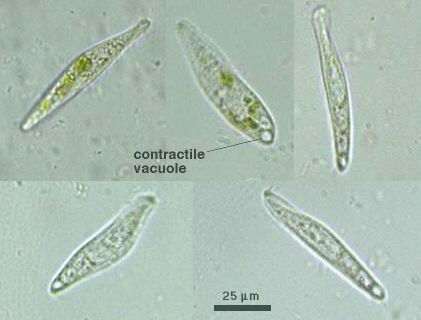 Genus: Flask-shaped; elongate, flattened; anterior region neck-like; cilia only on right side;
without trichocyst-borders; cytostome with trichocysts; two macronuclei (Kudo, 1966).
Genus: Flask-shaped; elongate, flattened; anterior region neck-like; cilia only on right side;
without trichocyst-borders; cytostome with trichocysts; two macronuclei (Kudo, 1966).
Species:
 Genus: Flask-shaped; elongate, flattened; anterior region neck-like; cilia only on right side;
without trichocyst-borders; cytostome with trichocysts; two macronuclei (Kudo, 1966).
Genus: Flask-shaped; elongate, flattened; anterior region neck-like; cilia only on right side;
without trichocyst-borders; cytostome with trichocysts; two macronuclei (Kudo, 1966).
Species: |



Litonotus sp. (?), x 400, by Y. Tsukii
![]() 50 μm
50 μm
![]() 100 μm
100 μm
![]() 150 μm; x 400
150 μm; x 400





Litonotus sp. (?), x 1000, by Y. Tsukii
![]() 20 μm
20 μm
![]() 40 μm
40 μm
![]() 60 μm; x 1000
60 μm; x 1000

Litonotus sp. ??, x 400, x 640, Saitama Pref., May-June 1999 by Y. Tsukii
![]() 50 μm
50 μm
![]() 100 μm
100 μm
![]() 150 μm; x 400 :
150 μm; x 400 :
![]() 31 μm
31 μm
![]() 63 μm
63 μm
![]() 94 μm; x 640
94 μm; x 640



Litonotus fusidens (Kahl, 1926): Pear shaped, 100 μm long; no true neck region, posterior rounded; large trichocysts in the oral area; two macronuclei with intercalated micronucleus; a contractile vacuole posteior (Carey, 1992).
Litonotus loxphylliforme (Dragesco, 1960) (Syn. Hemiophrys loxphylliforme Dragesco, 1960): Resembles Loxophyllum; cell body elongate than pyriform (L. fusidens); 80-100 μm long; oral area equipped with large trichocysts; two spherical macronuclei; no contractile vacuole ? (Carey, 1992).